5 Edible Sensory Play Ideas
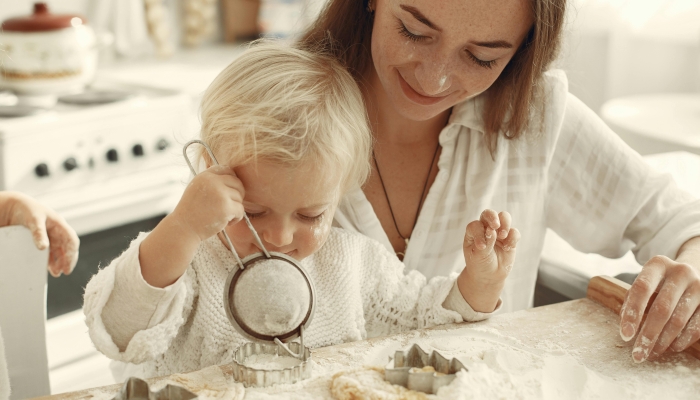
This post may contain affiliate links; please see our terms of use for details.
- Edible sensory play allows children to safely explore their sense of taste and smell, enhancing their sensory experiences.
- Using sensory play materials, you can encourage children to use their imaginations by creating shapes, designs, and patterns.
- Edible sensory play encourages creativity, cognitive development, social skills, and language development.
Parents know kids will put just about anything in their mouths, but there is good news! Edible sensory play provides a worry-free way for your child to explore their senses because you know that what they’re consuming is safe.
While we encourage our kids to explore and engage their senses, safety is always a priority. Edible sensory play shines in this aspect, offering the developmental benefits of sensory activities with the added safety of using food-based materials.
Let’s explore five of my favorite edible sensory play ideas, perfect for your next afternoon at home.
1. Homemade Edible Playdough
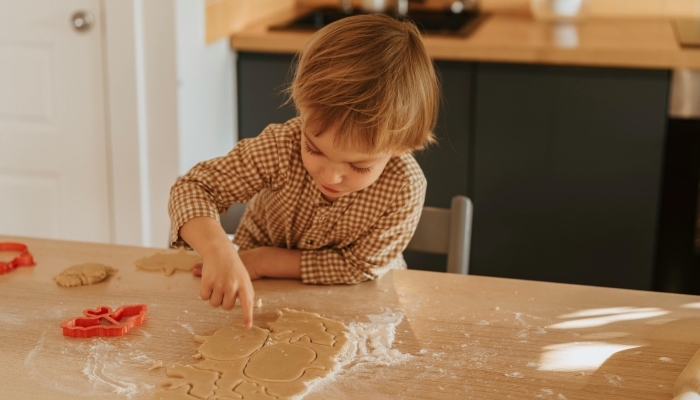
Homemade edible playdough is one of the most popular sensory play ideas and with good reason. Playdough is a fantastic way to work on sensory motor skills, like fine motor skills and hand-eye coordination.
You can encourage sensory play by providing tools like cookie cutters, trucks, and objects around your house. I frequently raid the silverware drawer when my kids play with playdough!
Many homemade playdough recipes require flour, but the U.S. Food & Drug Administration11. Flour Is a Raw Food and Other Safety Facts. U.S. Food and Drug Administration. 2023. https://www.fda.gov/consumers/consumer-updates/flour-raw-food-and-other-safety-facts (FDA) recommends against consuming raw flour, so I chose one without any.
Materials Needed:
- Creamy peanut butter
- Honey
- Powdered milk
- Mixing bowl
Instructions:
- Combine your ingredients in a large mixing bowl. (You can choose the amount you’d like, so long as they are equal parts.)
- Mix with a wooden spoon until all the ingredients form a ball.
Note: You shouldn’t give honey to children under one due to the risk of infant botulism22. Foods to avoid giving babies and young children. NHS choices. 2022. https://www.nhs.uk/conditions/baby/weaning-and-feeding/foods-to-avoid-giving-babies-and-young-children/#:~:text=Honey,prevent%20tooth%20decay..
2. Smoothie Slush Play
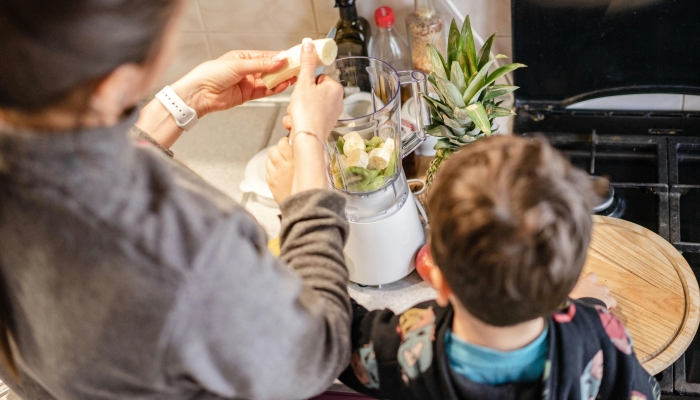
Do you have a picky eater at home? A 2017 study conducted by Coulthard et al. found that sensory play with fruit33. Coulthard, H., Williamson, I., Palfreyman, Z., & Lyttle, S.. Evaluation of a pilot sensory play intervention to increase fruit acceptance in preschool children. Appetite. 2017;120, 609–615. https://doi.org/10.1016/j.appet.2017.10.011 and/or non-food substances combined with exposure may be an effective strategy to increase children’s fruit tasting and acceptance.
Smoothie slush play is an excellent way to encourage sensory play while combining creativity with healthy eating. Once you create your smoothie, let your child explore the texture by dipping their fingers.
You can also give your child cookie cutters and let them pour the smoothie in to make various shapes. Don’t forget to ask your kiddos about the flavors and textures they experience, which helps fully engage them in sensory play.
Remember to have your child wash their hands before since they will likely put them in their mouth! You’ll also want paper towels since this activity can get messy. Consider using a large tray or a plastic tablecloth under the play area to minimize mess.
Materials Needed:
- Various frozen fruits
- Liquid base (i.e., milk, coconut water, fruit juice)
- Ice
- Honey (optional sweetener)
- Yogurt (optional for creamier texture)
- Edible decorations (i.e., sprinkles, chia seeds, or edible glitter)
- Blender
Instructions:
- Add your fruit to the blender.
- Next, add your liquid, optional sweetener, and decorations.
- Blend until smooth.
- Adjust your consistency as needed by adding yogurt for a creamier texture.
3. Edible Sand
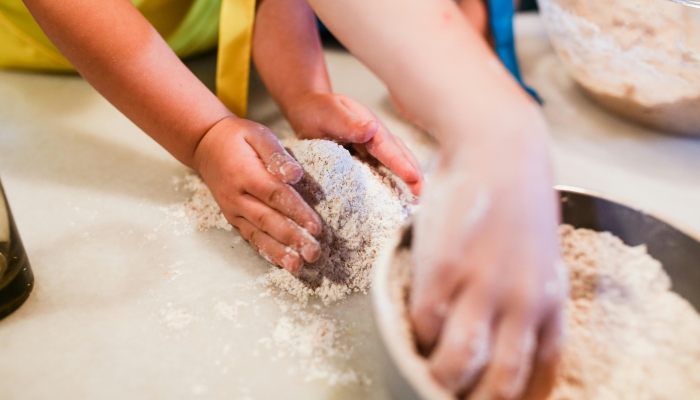
My oldest didn’t like the feeling of sand when he was younger, so I made a sensory sandbox to get used to. (We’ve lived down the street from the beach; I was determined!)
However, I would have preferred making something safe if consumed since he still put things in his mouth.
Making edible sand with crushed graham crackers is a fun way to bring the beach inside without worrying about your little one eating sand. You can also grab some sensory toys for toddlers for your child to play with in their edible sand.
Materials Needed:
- 1 box of graham crackers
- 1 cup of coconut flour or almond flour
Instructions:
- Crush the graham crackers into a fine powder.
- Mix with coconut flour or almond flour to create a sand-like texture.
- Kids can use this to dig and build, just like with real sand.
4. Taste-Safe Paints
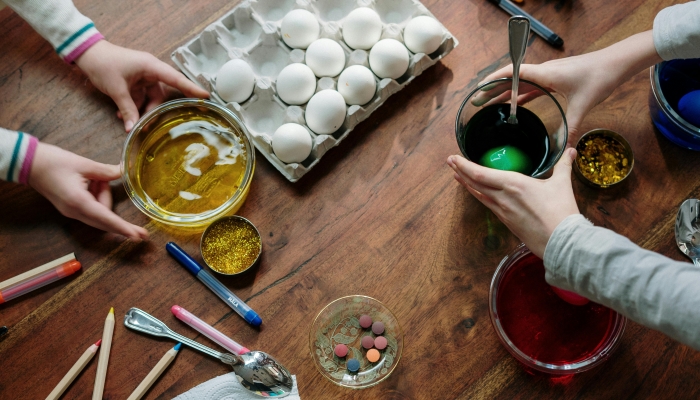
Taste-safe paints are an excellent way for young children to explore their creativity safely while creating their next masterpiece. Using taste-safe paints is fantastic for:
- Sensory development
- Fine motor skills
- Color recognition
- Cognitive skills
- Creativity
- Language development
Remember that taste-safe paints can stain, so use smocks and cover surfaces as needed. In addition, while you can store leftover paints in airtight containers in the refrigerator, I don’t recommend it, especially if they are rotating between playing with the paint and putting their fingers in their mouth.
Materials Needed:
- Plain yogurt
- Food coloring
- Bowl
Instructions:
- Divide the yogurt into small bowls.
- Mix well with a few drops of different food coloring in each bowl.
- Use paint brushes or fingers to paint on paper.
5. Rainbow Pasta
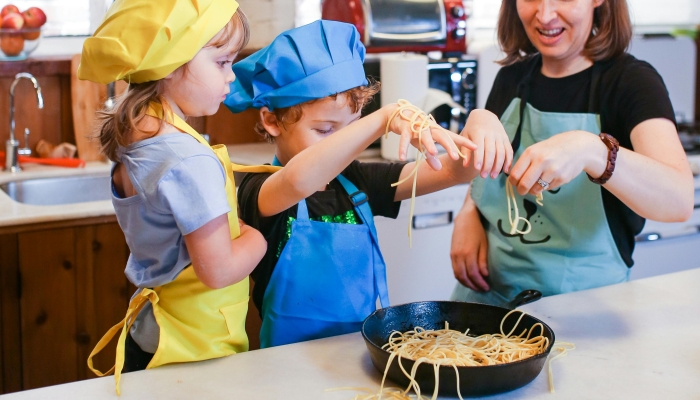
Creating rainbow pasta for edible sensory play is a fun, colorful, and engaging activity for children. It’s also really easy to make, and you can snack on it while you’re doing it.
Some of my favorite sensory play ideas with rainbow pasta are:
- Color Sorting: Encourage your child to sort the pasta by color.
- Counting and Patterns: Use the pasta for counting exercises or creating patterns.
- Texture Exploration: Let your kids explore the different textures of the pasta and describe what they feel.
- Pretend Cooking: Incorporate pretend cooking elements, like letting your child “cook” their rainbow pasta. (This is fantastic if your kiddos have a play kitchen!)
Materials Needed:
- Cooked pasta
- Olive oil
- Food coloring
Instructions:
- Cook the pasta and drain it.
- Separate the pasta into ziplock bags.
- Add a few drops of food coloring and olive oil to each bag.
- Shake until the pasta is evenly colored.
- Rinse with water to remove excess color.
FAQs
What are the best natural food dyes for coloring edible sensory play materials?
Several natural food dyes are available, but Watkins Assorted Food Coloring is my favorite. It’s reasonably priced, has no artificial colors, and is derived from pure vegetable juices and spices.
- Derived from pure vegetable juices and spices including beet juice, turmeric and spirulina extract.
- FD&C Dye Free
- No Artificial Colors
- Non-GMO, Gluten Free
How long can homemade edible play dough be stored before it spoils?
Homemade edible play dough can be stored in an airtight container in the fridge for about one day. However, after your child plays with it (or snacks on it) you should dispose of it.
How can I make sure the sensory play area remains hygienic when using edible materials?
While edible materials provide a safe way for children to explore their environment, it’s essential to have a clean space to work in. In addition, ensure your child washes their hands before and after the activity.
What are the safest ways to introduce edible sensory play to children with food allergies?
You should always inspect the ingredients before introducing edible sensory play to children with food allergies. The benefit of making edible sensory play at home is you know what you’re putting in it.
References
- Flour Is a Raw Food and Other Safety Facts. U.S. Food and Drug Administration. (2023, December 5). https://www.fda.gov/consumers/consumer-updates/flour-raw-food-and-other-safety-facts
- Foods to avoid giving babies and young children. NHS choices. (2022, August 18). https://www.nhs.uk/conditions/baby/weaning-and-feeding/foods-to-avoid-giving-babies-and-young-children/#:~:text=Honey,prevent%20tooth%20decay.
- Coulthard, H., Williamson, I., Palfreyman, Z., & Lyttle, S. (2017). Evaluation of a pilot sensory play intervention to increase fruit acceptance in preschool children. Appetite, 120, 609–615. https://doi.org/10.1016/j.appet.2017.10.011
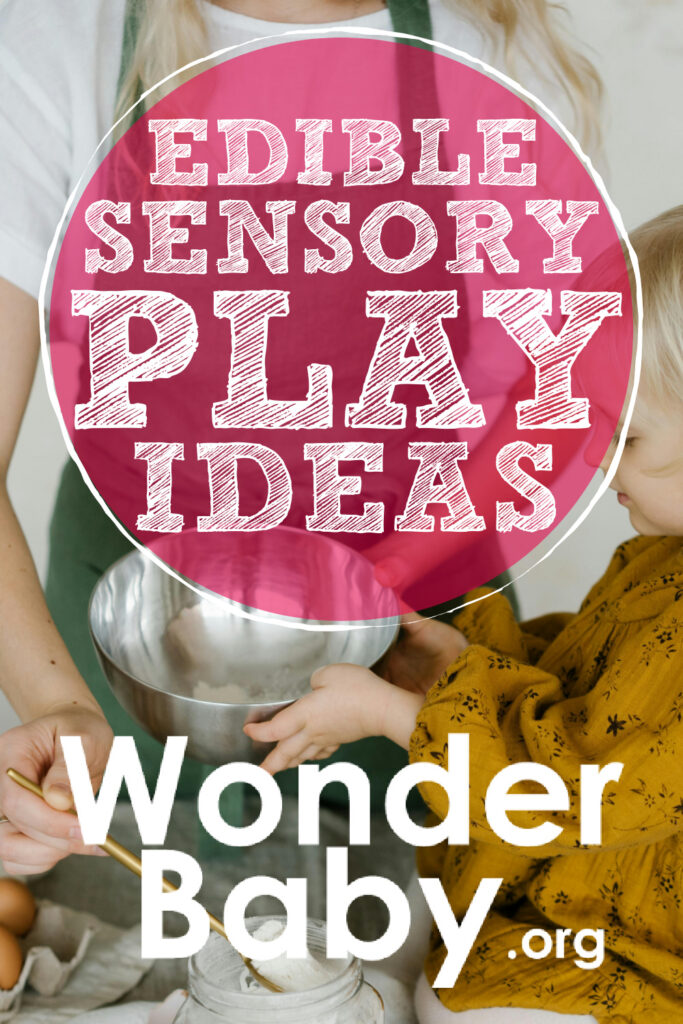
Related Posts
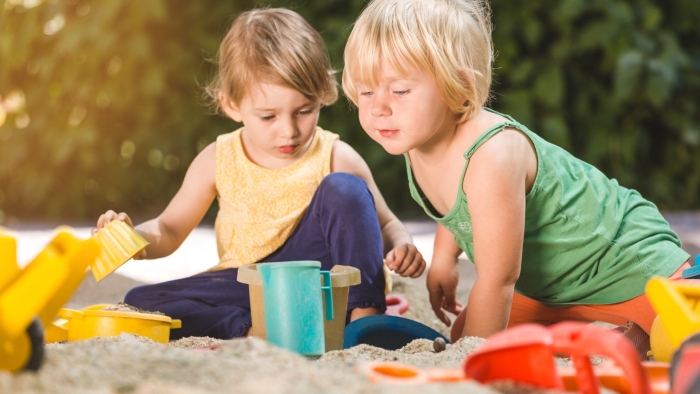
Sensory Activities
5 Sand Play Activities to Encourage Fine Motor Development
Sensory bin, at the beach, or in a sandpit? Try these sand play activities to help toddlers and preschoolers develop their fine motor skills.

Sensory Activities
How to Make Unpoppable Bubbles
Discover the secret to making unpoppable bubbles with this easy guide. You only need three ingredients!
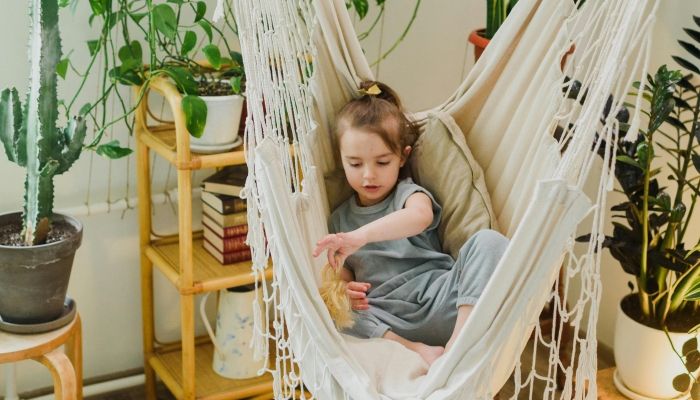
Behavior, Sensory Activities
8 Must-Haves for a Soothing Sensory Toolkit
Looking for sensory toolkit essentials for your child? These soothing items can help your child with sensory processing difficulties!
